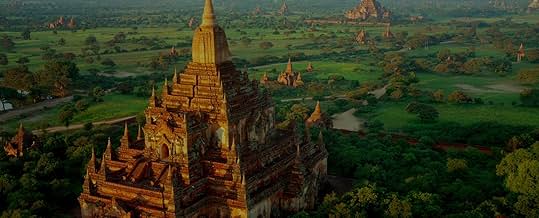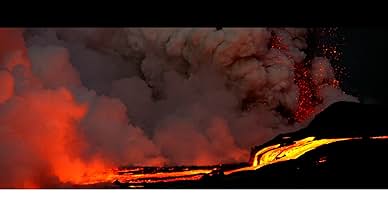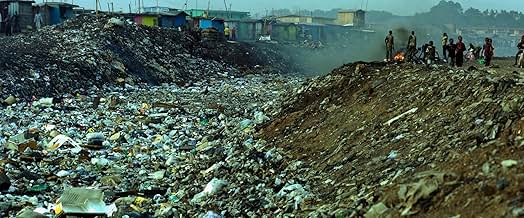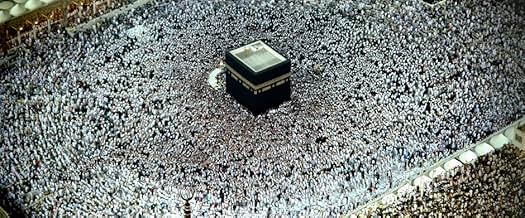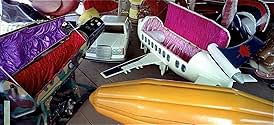IMDb रेटिंग
8.4/10
39 हज़ार
आपकी रेटिंग
पांच महाद्वीपों पर पच्चीस देशों में लगभग पांच वर्षों में फिल्माई गई, और सत्तर मिलीमीटर की फिल्म पर शूट की गई फ़िल्म संसार हमें पवित्र भूमियों, आपदा क्षेत्रों, औद्योगिक परिसरों और प्राकृतिक आ... सभी पढ़ेंपांच महाद्वीपों पर पच्चीस देशों में लगभग पांच वर्षों में फिल्माई गई, और सत्तर मिलीमीटर की फिल्म पर शूट की गई फ़िल्म संसार हमें पवित्र भूमियों, आपदा क्षेत्रों, औद्योगिक परिसरों और प्राकृतिक आश्चर्यों के विविध संसार में ले चलती है.पांच महाद्वीपों पर पच्चीस देशों में लगभग पांच वर्षों में फिल्माई गई, और सत्तर मिलीमीटर की फिल्म पर शूट की गई फ़िल्म संसार हमें पवित्र भूमियों, आपदा क्षेत्रों, औद्योगिक परिसरों और प्राकृतिक आश्चर्यों के विविध संसार में ले चलती है.
- पुरस्कार
- 1 जीत और कुल 6 नामांकन
Hiroshi Ishiguro
- Professor and Robot Clone: Japan
- (as Prof. Hiroshi Ishiguro)
Robert Henline
- U>S> Army Veteran: USA
- (as Staff Sergeant Robert Henline)
Tai Lihua
- Lead Dancer: 1000 Habds Goddess Dance, China
- (as Iai Lihua)
Collin Alfredo St. Dic
- Self
- (as Collin St. Dic)
- …
कहानी
क्या आपको पता है
- ट्रिवियाFor several years the filmmakers attempted to secure permission to film in North Korea, but were ultimately denied access.
- साउंडट्रैकBali Dance
and "1000 Hands"
Based on "Omaha Clear Skies"
From the CD "Star Songs" © 2010
By Bonnie Jo Hunt & Ron Sunsinger
Bonnie Jo Productions & Sunsinger Productions
फीचर्ड रिव्यू
Samsara is a depressingly accurate account of shallow human materialism, the widespread ungratefulness of our culture, and the incredible arrogance we continue to proudly possess. It features images too powerful to be computer generated and humanity too sincere to be fiction. Even though not a word is spoken, the film's images pack well over a thousand words, making Samsara, hypothetically, the longest work of poetry ever written.
The film chronicles the living conditions, the activities, and the day-to-day routines of many different people across twenty-five different countries. We never do get a true answer where we are at, which works as a method by the filmmakers, I assume, to prevent assumptions and judgments on the places and the people. We are shown many things in these evocative, unforgettable one-hundred minutes, and more depth and enigma than many will experience in their lifetime.
Shots are presented in crystal clear 70mm (if you're lucky enough to find a theater with the proper projector, but regular theater projectors should work efficiently enough), and we get a beautiful look at life in the slums, life in mansions placed delicately on the coastlines, and living conditions in countries such as Ethiopia and the United States. We see early religious rituals carried out, such as Tibetan monks engaged in their prayers or youthful baptisms, as well as contrasting lifestyles that involve dance mobs, suffering, and habitat destruction.
Director Ron Ficke's imagery and global cinematography is gripping and astounding, with long shots centered on characters, groups of people, or sometimes, aerial shots that feature a wide coverage of the surrounding land. My favorites are easily the time lapse sequences, sped up to breakneck speeds, sometimes showing haunting images of uncertainty or simply the fast paced nature of our world.
There are two sequences in particular that are the most haunting, and describing them will be no easy task. One involves a man sitting behind a desk, who begins to smear modeling clay on his face, before grabbing a tiny paint brush and stroking black and red paint all over himself as well. He begins to vigorously do both things at once, ripping clay off his face only to smear it back on, throw dust in his eyes, stick pencils in his face, etc. The long-shot becomes faster and faster, while jolting music plays in the background. The scene alone is more horrifying and surreal than anything I've seen in 2012, with the exception of Battle Royale.
The other lasts about five or six minutes, involving a barn full of chickens helplessly being sucked into a large, ominous tractor that will kill them and prepare them for tomorrow's meal. From birth to death, they live their entire life in fear and darkness, barely being able to move due to their heavy breasts and increasing plumpness. We too get a look at pot belly pigs, also too heavy to move, as they lay still and allow their piglets to drink milk from their nipples. We then see those same baby pigs hanging from a long line in the air at a condensed factory, being prepared into the bacon you will eat tomorrow for breakfast.
These images are nonetheless painful, but it all resorts back to what I called Samsara in the first paragraph - depressingly accurate, more haunting than fiction, and silently nudging us when we're left agape, saying, "hey, we're to thank for this." And we are. One of the final shots involves a beautiful mural of tiny colored specs being swept away in seconds by men brushing the table it is on. We are stunned that such a beautiful thing would be carelessly wiped away, but it all returns back to the idea that we were too given a beautiful slice of life and the world and we took it for granted and nearly destroyed it. We weren't able to take a second look.
Fricke paints Samsara, which is Sanskrit for "the ever turning wheel of life," as a film that sometimes can laud human activity and then turn around and condemn it. It is predominately a loose picture, that wants you to search for meaning in its images, but unlike Jean-Luc Godard's Film Socialisme, a horrible exercise in a similar field, we can see the images represent something and there's enough ambiguity that we are able to extract many different messages from the source material and are able to provide sufficient evidence to back up our claims. To put it simply, this is one of the best, most intellectually stimulating films of the last ten years.
Directed by: Ron Fricke.
The film chronicles the living conditions, the activities, and the day-to-day routines of many different people across twenty-five different countries. We never do get a true answer where we are at, which works as a method by the filmmakers, I assume, to prevent assumptions and judgments on the places and the people. We are shown many things in these evocative, unforgettable one-hundred minutes, and more depth and enigma than many will experience in their lifetime.
Shots are presented in crystal clear 70mm (if you're lucky enough to find a theater with the proper projector, but regular theater projectors should work efficiently enough), and we get a beautiful look at life in the slums, life in mansions placed delicately on the coastlines, and living conditions in countries such as Ethiopia and the United States. We see early religious rituals carried out, such as Tibetan monks engaged in their prayers or youthful baptisms, as well as contrasting lifestyles that involve dance mobs, suffering, and habitat destruction.
Director Ron Ficke's imagery and global cinematography is gripping and astounding, with long shots centered on characters, groups of people, or sometimes, aerial shots that feature a wide coverage of the surrounding land. My favorites are easily the time lapse sequences, sped up to breakneck speeds, sometimes showing haunting images of uncertainty or simply the fast paced nature of our world.
There are two sequences in particular that are the most haunting, and describing them will be no easy task. One involves a man sitting behind a desk, who begins to smear modeling clay on his face, before grabbing a tiny paint brush and stroking black and red paint all over himself as well. He begins to vigorously do both things at once, ripping clay off his face only to smear it back on, throw dust in his eyes, stick pencils in his face, etc. The long-shot becomes faster and faster, while jolting music plays in the background. The scene alone is more horrifying and surreal than anything I've seen in 2012, with the exception of Battle Royale.
The other lasts about five or six minutes, involving a barn full of chickens helplessly being sucked into a large, ominous tractor that will kill them and prepare them for tomorrow's meal. From birth to death, they live their entire life in fear and darkness, barely being able to move due to their heavy breasts and increasing plumpness. We too get a look at pot belly pigs, also too heavy to move, as they lay still and allow their piglets to drink milk from their nipples. We then see those same baby pigs hanging from a long line in the air at a condensed factory, being prepared into the bacon you will eat tomorrow for breakfast.
These images are nonetheless painful, but it all resorts back to what I called Samsara in the first paragraph - depressingly accurate, more haunting than fiction, and silently nudging us when we're left agape, saying, "hey, we're to thank for this." And we are. One of the final shots involves a beautiful mural of tiny colored specs being swept away in seconds by men brushing the table it is on. We are stunned that such a beautiful thing would be carelessly wiped away, but it all returns back to the idea that we were too given a beautiful slice of life and the world and we took it for granted and nearly destroyed it. We weren't able to take a second look.
Fricke paints Samsara, which is Sanskrit for "the ever turning wheel of life," as a film that sometimes can laud human activity and then turn around and condemn it. It is predominately a loose picture, that wants you to search for meaning in its images, but unlike Jean-Luc Godard's Film Socialisme, a horrible exercise in a similar field, we can see the images represent something and there's enough ambiguity that we are able to extract many different messages from the source material and are able to provide sufficient evidence to back up our claims. To put it simply, this is one of the best, most intellectually stimulating films of the last ten years.
Directed by: Ron Fricke.
- StevePulaski
- 15 सित॰ 2012
- परमालिंक
टॉप पसंद
रेटिंग देने के लिए साइन-इन करें और वैयक्तिकृत सुझावों के लिए वॉचलिस्ट करें
विवरण
- रिलीज़ की तारीख़
- कंट्री ऑफ़ ओरिजिन
- आधिकारिक साइटें
- भाषा
- इस रूप में भी जाना जाता है
- Luân Hồi
- फ़िल्माने की जगहें
- उत्पादन कंपनियां
- IMDbPro पर और कंपनी क्रेडिट देखें
बॉक्स ऑफ़िस
- बजट
- $40,00,000(अनुमानित)
- US और कनाडा में सकल
- $26,72,413
- US और कनाडा में पहले सप्ताह में कुल कमाई
- $76,222
- 26 अग॰ 2012
- दुनिया भर में सकल
- $44,26,444
- चलने की अवधि1 घंटा 42 मिनट
- रंग
- ध्वनि मिश्रण
- पक्ष अनुपात
- 2.39 : 1
इस पेज में योगदान दें
किसी बदलाव का सुझाव दें या अनुपलब्ध कॉन्टेंट जोड़ें





